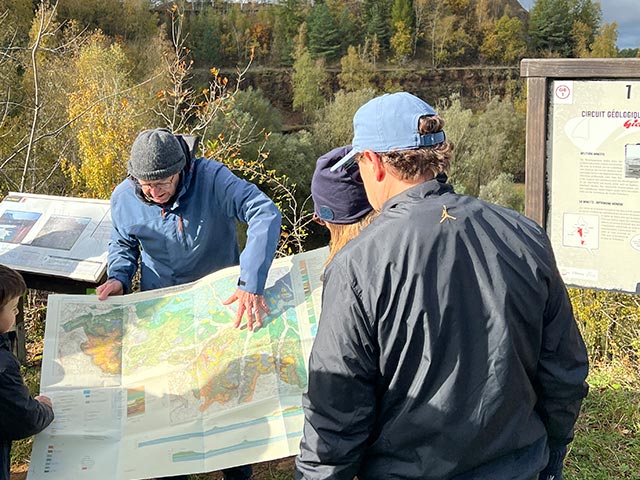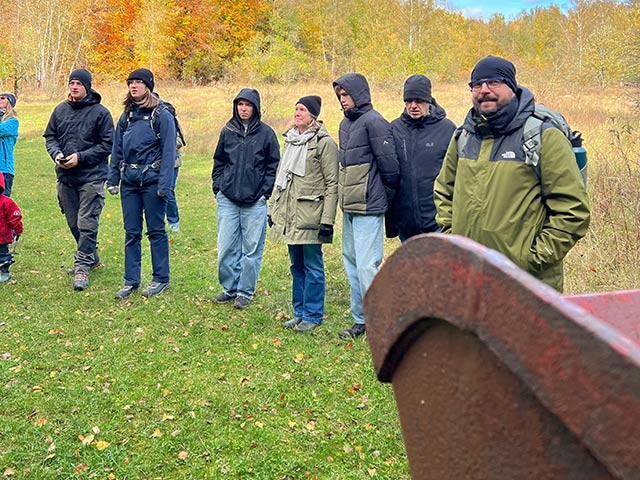In the south of Luxembourg, in the Minett UNESCO Biosphere, lies a geologically fascinating landscape that is shaped by its industrial past like few others.
For over a century, the “Minette” iron ore, named for its reddish color, was mined in our region. It formed the basis for the wealth of the entire Grand Duchy. On Sunday, October 26, as part of UNESCO World Geodiversity Day, a geological excursion led us to the fascinating relics of this era, revealing a unique connection between Earth’s history, mining, and nature.
From the mine to the nature reserve
The focus of the workshop was the former open-cast mining area “Giele Botter” near Niederkorn. Where giant machines once removed the rock, leaving behind an almost canyon-like landscape, a vast nature reserve now extends. Geology professor Jean-Frank Wagner, who taught at the University of Trier until his retirement, guided a dozen interested participants through the mining area and along the geological trail.
 |
 |
© Minett UNESCO Biosphere
At the individual stations of the trail, Professor Wagner provided additional information on the formation of the Minette iron ore, explained why it was possible to mine this resource on the surface in Luxembourg, and used the man-made terraced landscapes to illustrate the different geological epochs in which the iron ore deposits in southern Luxembourg occurred.
The Legacy of Iron
For the participants, the excursion through one of the former mining areas of the Minette basin was thus more than just a geological outing. They embarked on a journey through time that took them from the shallow seas of the Jurassic period, through the Industrial Revolution, to the modern challenges of land use and nature conservation. It was impressively shown how closely the country’s history is interwoven with the treasures of its soil and how the landscape continues to tell this story today.



